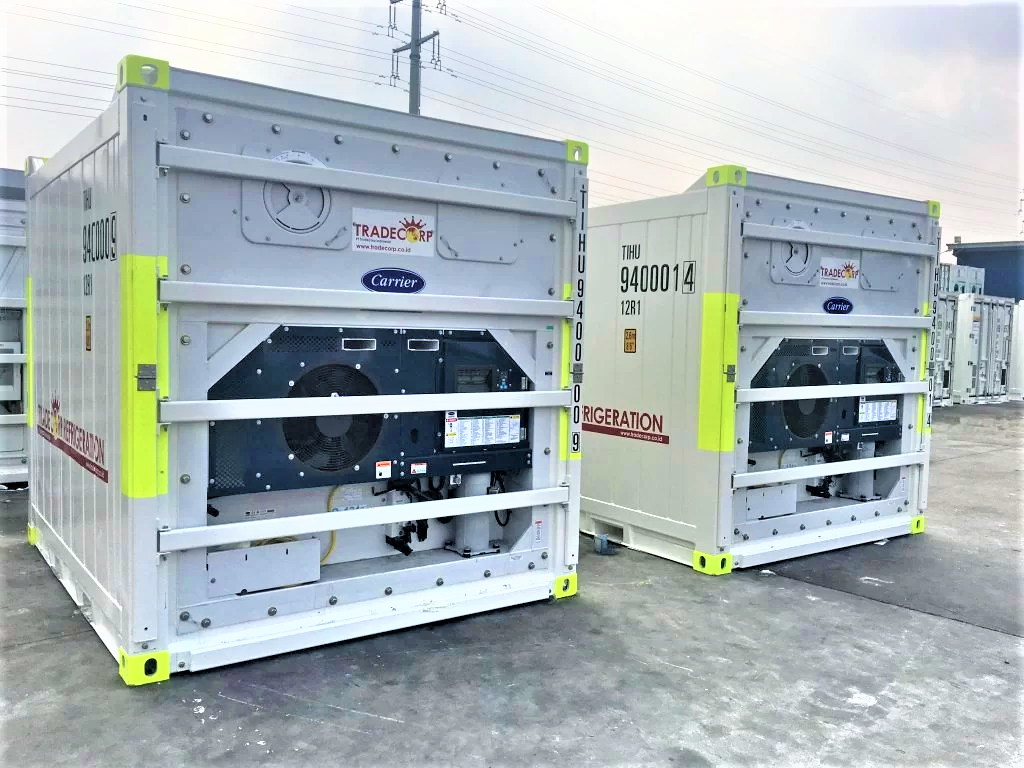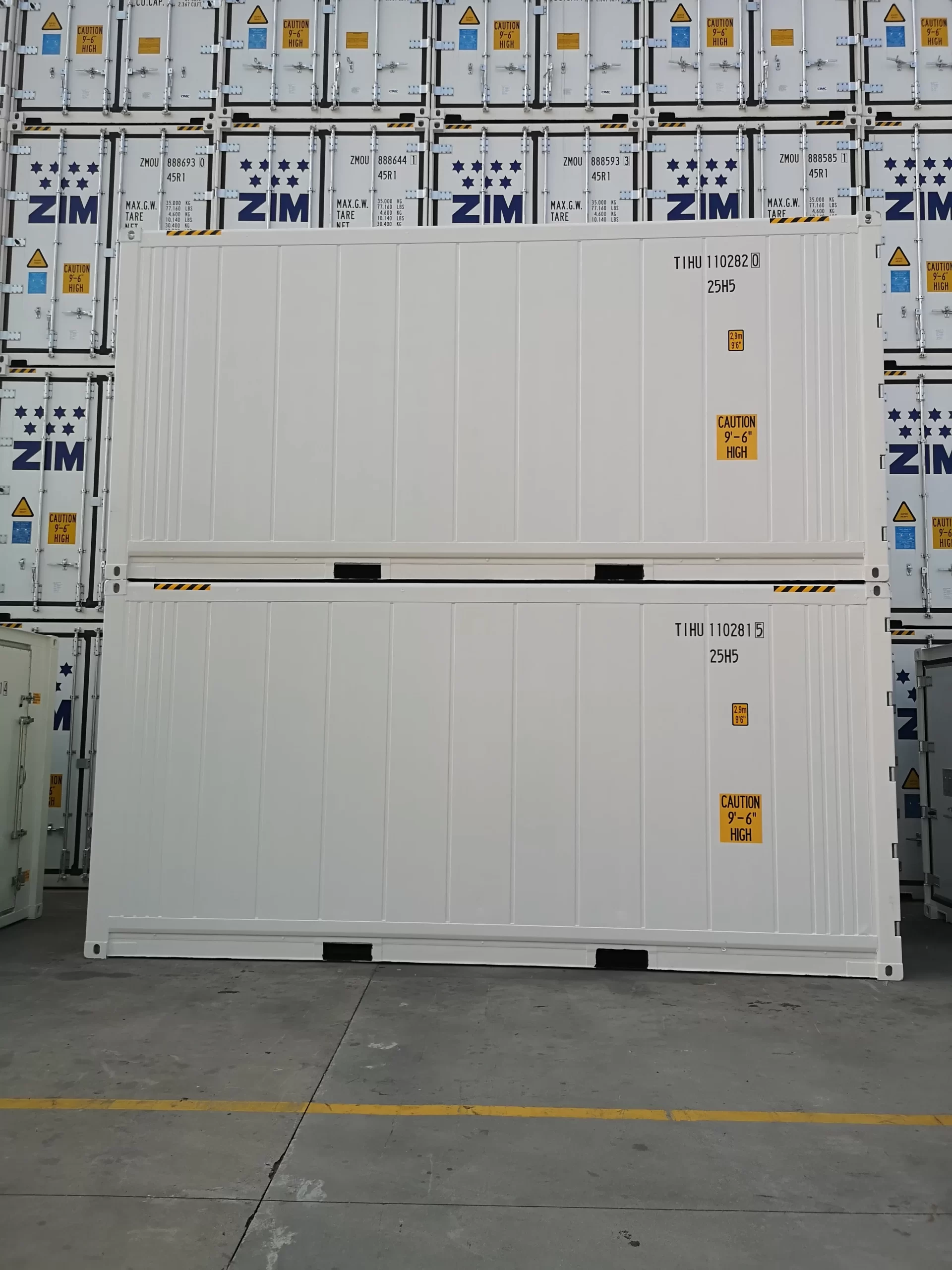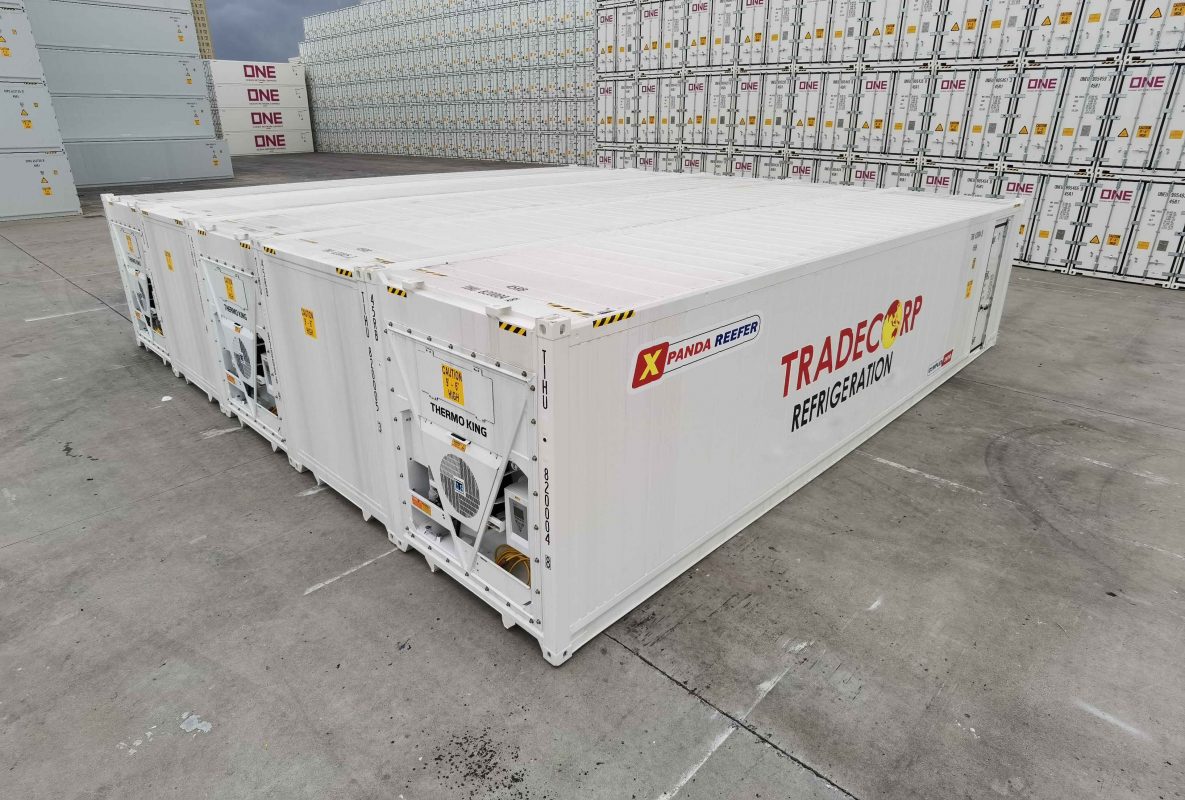If you want to ship or store something that needs to be kept cold, you must decide between a reefer or an insulated container. Refrigerated and insulated containers are two types of shipping containers that are designed to protect goods from extreme temperatures.
Both have their advantages and disadvantages, and you will know that there’s no one-size-fits-all solution for shipping and storage. While both options offer thermal protection, they have distinct features and different purposes.
In this article, we will get to know both containers, so that you know how to make the right choice to ship your goods.
What are refrigerated containers?

A ‘reefer’ container is the industry-used name for a refrigerated container. It is a type of shipping container used to transport goods that need to be maintained at a cold temperature.
A reefer container comes with a refrigeration unit on one end. Once connected to a power source or a generator, the unit fills the container with chilled air. The temperature inside the reefer can operate to ultra-low temperatures of up -70oC, depending on the machinery type.
A reefer container uses T-bar floors to allow cool air to circulate the cargo from the bottom up. The cooling system inside the container aims to maintain a specific temperature and it includes a control panel, vents, insulation, and a condenser.
What are refrigerated containers used for?
A reefer is used when you are transporting perishable goods that require refrigeration over a long distance or storing them for an extended period. Some of the most commonly shipped food items are meat (frozen and chilled), seafood, fruits and vegetables, milk and dairy products, processed food, juice and beverages, wine, etc.
Drugs and pharmaceuticals are also primarily shipped in a reefer container. Reefer containers played a vital role in the Covid-19 crisis. Refrigerated containers made it possible to ship medicines and vaccines wherever needed.
What are insulated containers?

A non-operational refrigerated container is also called an insulated shipping container. An insulated container exists in the middle ground between reefer containers and standard dry containers. It is used for goods that don’t require a specific set temperature but do require a maintained ambient temperature.
An insulated container relies on its insulation properties to maintain a steady temperature throughout. This is an advantage if your goods are being shipped a relatively short distance, when no power is available, or when a regular temperature is all that’s required rather than refrigeration.
An insulated container prevents damage due to temperature fluctuation during hauling. It also minimizes condensation caused by rainwater or moisture finding its way inside the container.
What are insulated containers used for?
An insulated container is widely used for the transport of food, beverages, pharmaceuticals, clothes, furniture, and more. It is used in different sectors when it comes to the transportation of sensitive non-durable goods.
The most significant task is to ensure that the cold chain doesn’t break. An insulated container can be used to ship fresh products and keep up their freshness, transport goods with the need for low temperature for a short distance, ensure a standard temperature when no refrigeration is needed, and prevent abrupt temperature changes.
When to choose both options?
First of all, the difference between the two containers is simple. A reefer has a motor and needs a power source like a generator on the vessel. An insulated container, on the other hand, is a non-refrigerated container that maintains a steady temperature but without an active refrigerating system.
When choosing between the two options, you need to be aware of the shipped goods’ needs. A reefer provides precise temperature control inside the container, while an insulated container just maintains the initial temperature and protects the interior from the exterior conditions.
Reefers keep goods cold, frozen, or at a specific temperature during long-distance shipping, while insulated containers are often used in the retail market. Even though the differences seem small, they do significantly change what it’s used for with some strong reasons and advantages for doing so.
When choosing a reefer container, it is critical to examine the payload and packaging, as well as to ensure proper circulation and cleaning. We may expect major improvements in reefer container technology as technology advances, making it even more efficient and effective in the future.
Where to purchase a reefer and an insulated container?
Tradecorp offers refrigerated and insulated shipping containers for sale and rent at a competitive price. You may consult with one of our team to make the right choice for your goods’ requirements. Not only those containers, but Tradecorp also provides other types of shipping containers, such as standard sea containers, offshore DNV, open-top containers, flat-rack containers, tank containers, and many more options. We will have them ready for you. If the standard orders don’t match your needs, we also accept custom orders. Fill out the form on our page and one of our sales will be in contact with you promptly.

